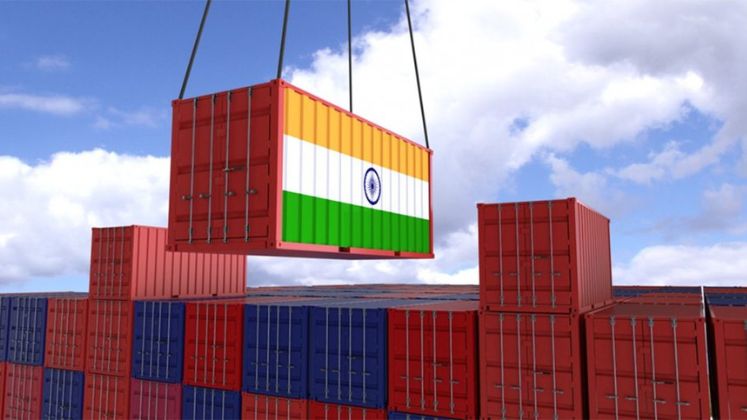India’s handicraft industry is a vibrant amalgamation of its rich cultural heritage and artistic ingenuity. Encompassing traditional crafts such as brassware, woodwork, textiles, pottery, and jewellery, the sector not only reflects the country’s historical legacy but also contributes significantly to its economy. In recent years, Indian handicrafts have made remarkable strides on the global stage, driven by government initiatives, digital transformation, and increasing global appreciation for authentic, handmade products.
The Cultural Legacy of Indian Handicrafts
Indian handicrafts represent centuries of tradition, deeply rooted in local communities and regional identities. From the intricate brassware of Moradabad to the wooden carvings of Saharanpur, from blue pottery in Jaipur to the delicate chikankari embroidery of Lucknow, each craft tells a story of cultural preservation and skilled craftsmanship passed down through generations.
Artisan communities form the backbone of this industry, employing over 7 million people, many of whom belong to rural and marginalized sections of society. The products’ uniqueness, sustainability, and cultural resonance have garnered global attention, making Indian handicrafts highly sought-after in international markets.
Growth of the Handicraft Industry: A Global Perspective
The global handicraft market has witnessed exponential growth over the past five years, bolstered by increasing demand for handmade, sustainable, and culturally rich products. According to reports, the global handicrafts market was valued at approximately $680 billion in 2022, with an anticipated compound annual growth rate (CAGR) of 10% until 2030.
India stands as one of the leading exporters in this space, with its handicraft exports reaching $4.35 billion in FY 2022-23, a 12% increase compared to the previous year. Key factors driving this growth include rising consumer awareness of sustainable practices, the increasing popularity of artisanal products, and improved market access through digital platforms.
Recent Trends:
- Digital Transformation:
- Platforms like Amazon, Etsy, and Flipkart have enabled Indian artisans to connect directly with global buyers. Virtual exhibitions and e-commerce platforms have broadened their reach, reducing dependency on intermediaries.
- Eco-Friendly and Sustainable Practices:
- Global consumers increasingly favour eco-friendly and handmade products, aligning with the sustainable practices inherent in Indian handicraft production.
- Customized and Contemporary Designs:
- To appeal to modern consumers, artisans are integrating contemporary designs while preserving traditional techniques.
Global Export-Import Dynamics
India’s top handicraft export destinations include the United States, Europe (Germany, France, and the UK), Australia, and the Middle East. Conversely, the country also imports raw materials such as high-quality wool, special clay, and certain pigments to enhance production quality.
Country-Specific Insights:
- United States:
- The U.S. remains the largest importer of Indian handicrafts, accounting for nearly 35% of total exports. Items like rugs, textiles, and brassware are particularly popular.
- European Union:
- European consumers prioritize sustainable and ethically sourced products, driving demand for Indian hand-woven textiles and eco-friendly decor.
- Australia and Middle East:
- Emerging markets in these regions have shown growing interest in artisanal and custom-designed products.
Spotlight: Artisans Making a Global Mark
One notable story is that of artisans from Kutch, Gujarat, whose vibrant embroidery and mirror work have captured the attention of international fashion designers. Similarly, brass artisans from Moradabad have found a niche in the luxury home decor market in Europe and the U.S. These success stories underscore the transformative potential of combining heritage with modern marketing strategies.
Government Initiatives and Policies
The Indian government has undertaken significant measures to promote handicraft exports and support artisans. Key initiatives include:
- India Handloom Brand:
- This initiative ensures quality and authenticity, boosting the global appeal of hand-woven products.
- Cluster Development Programs:
- Financial and infrastructural support to handicraft clusters across the country.
- Skill Development:
- Training programs to enhance artisan skills and introduce them to modern tools and techniques.
- Market Access:
- Organizing international trade fairs and online marketplaces to showcase Indian crafts to global buyers.
Future Prospects
The global handicraft industry is poised for sustained growth, with India well-positioned to expand its market share. The confluence of government support, rising demand for sustainable products, and increasing digitalization offers a promising outlook for the sector.
Strategic Growth Drivers:
- Adopting Digital Tools:
- Leveraging AI and data analytics to identify market trends and consumer preferences.
- Branding and Storytelling:
- Highlighting the cultural significance and artisan stories behind each product to create an emotional connection with buyers.
- Export Diversification:
- Expanding into untapped markets in Africa, Latin America, and Southeast Asia.
Conclusion
India’s handicraft industry is more than an economic driver; it is a custodian of the nation’s cultural heritage. By integrating traditional craftsmanship with modern innovations and sustainability practices, the sector has carved a niche in the global market. With continued support from the government and the entrepreneurial spirit of its artisans, India’s handicraft exports are set to flourish, crafting a legacy of global success.



